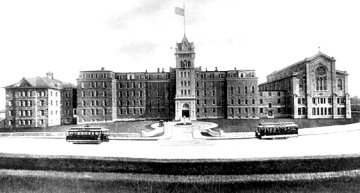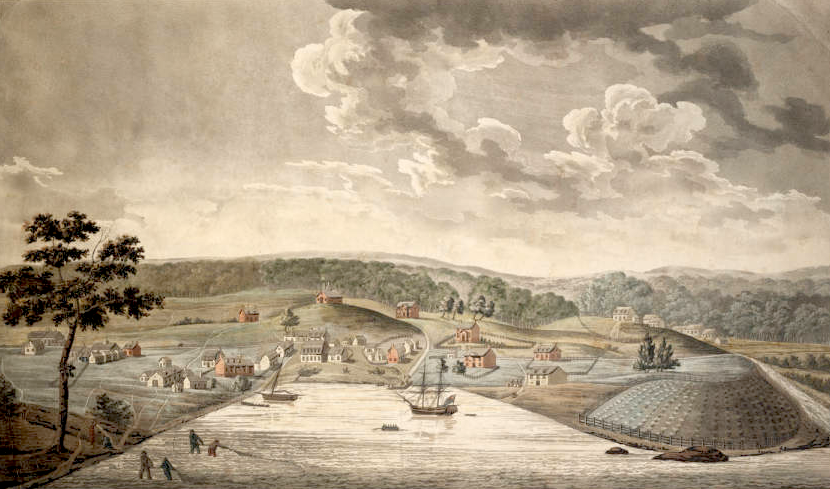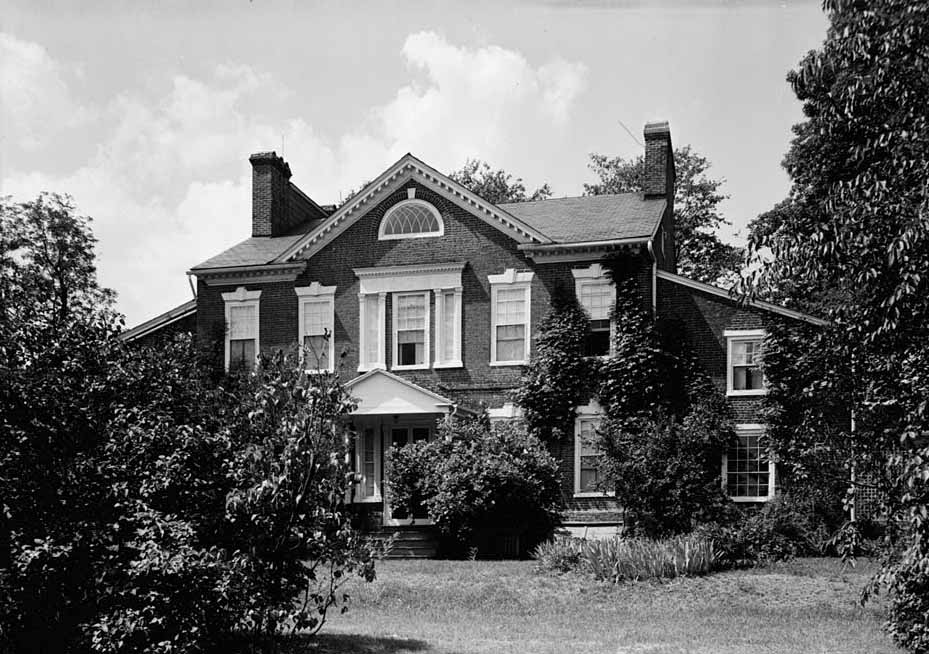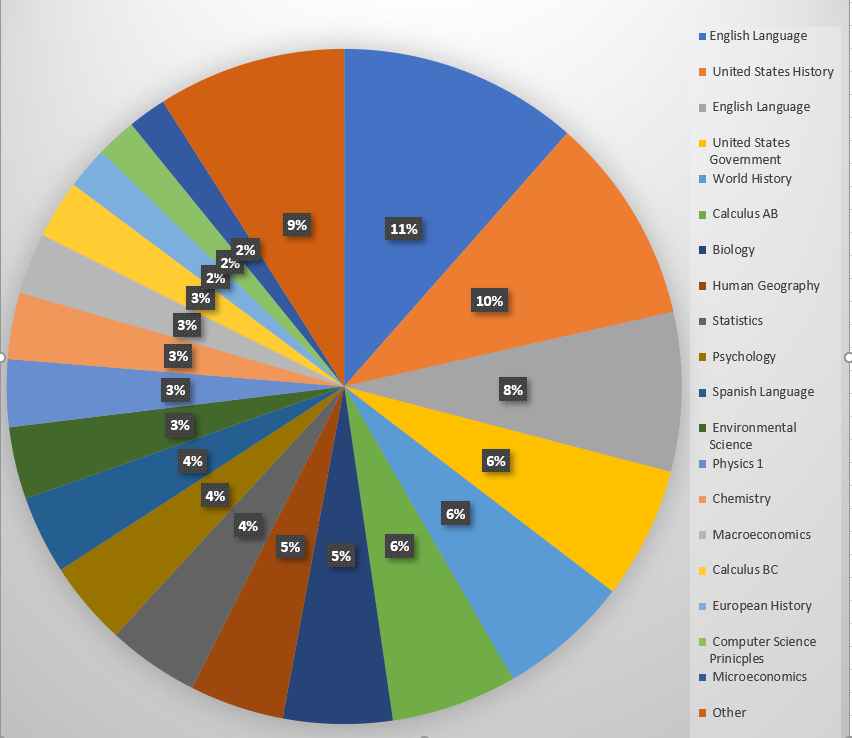|
Cardinal Gibbons School (Baltimore, Maryland)
The Cardinal Gibbons School, also referred to as Cardinal Gibbons, CG, and most commonly as Gibbons, was a Roman Catholic high school and middle school for boys in Baltimore, Maryland, USA. A private institution for grades 6–12, Gibbons drew its enrollment from the neighborhoods of southwest Baltimore City and the counties surrounding the Baltimore metropolitan area, with some as far away as Harford County, Carroll County, and Frederick County. Named in honor of James Cardinal Gibbons, said to be Baltimore's most distinguished Catholic churchman, the school was established in 1962 by the Archdiocese of Baltimore. Gibbons occupied the former site of the St. Mary's Industrial School, a reform school for boys and the Alma Mater of baseball great George Herman "Babe" Ruth. Following extensive renovations of the old St. Mary's campus in the early 1960s, the Cardinal Gibbons School opened. The school grew to its peak enrollment of just over 1,000 students in the mid-1970s. In 198 ... [...More Info...] [...Related Items...] OR: [Wikipedia] [Google] [Baidu] |
Baltimore
Baltimore is the most populous city in the U.S. state of Maryland. With a population of 585,708 at the 2020 census and estimated at 568,271 in 2024, it is the 30th-most populous U.S. city. The Baltimore metropolitan area is the 20th-largest metropolitan area in the country at 2.84 million residents. The city is also part of the Washington–Baltimore combined statistical area, which had a population of 9.97 million in 2020. Baltimore was designated as an independent city by the Constitution of Maryland in 1851. Though not located under the jurisdiction of any county in the state, it forms part of the central Maryland region together with the surrounding county that shares its name. The land that is present-day Baltimore was used as hunting ground by Paleo-Indians. In the early 1600s, the Susquehannock began to hunt there. People from the Province of Maryland established the Port of Baltimore in 1706 to support the tobacco trade with Europe and established the Town ... [...More Info...] [...Related Items...] OR: [Wikipedia] [Google] [Baidu] |
Harford County, Maryland
Harford County is a county located in the U.S. state of Maryland. As of the 2020 United States census, 2020 census, the population was 260,924. Its county seat is Bel Air, Harford County, Maryland, Bel Air. Harford County is included in the Washington metropolitan area, Washington-Baltimore-Arlington, DC-MD-VA-WV-PA Combined Statistical Area. The county is part of the Baltimore metropolitan area, Central Maryland region of the state. History In 1608 the area was inhabited by Iroquois#Expansion, Massawomecks and Susquehannocks. The first European to see the area was John Smith (explorer), John Smith in 1608 when he traveled up the Chesapeake Bay from Jamestown, Virginia, Jamestown. In 1652, the English and Susquehannocks signed a treaty at what is now Annapolis for the area now called Harford County. Harford County was formed on March 22, 1774, from the eastern part of Baltimore County, Maryland, Baltimore County with a population of 13,000 people. On March 22, 1775, Harford Co ... [...More Info...] [...Related Items...] OR: [Wikipedia] [Google] [Baidu] |
Irvington, Baltimore
Irvington is a List of Baltimore neighborhoods, neighborhood in the Southwest District of Baltimore, located between Yale Heights (Baltimore), Yale Heights neighborhood to the west and the Gwynn's Falls, Baltimore, Gwynns Falls neighborhood to the east. It was historically nicknamed "Skulltown" for its three large cemeteries: Loudon Park, Mount Olivet and New Cathedral. More than 50 percent of the homes in Irvington were built before 1950. Its population in 2022 was estimated at 5,402. The community's boundary with the Gwynns Falls neighborhood is drawn by Caton Avenue and the Penn Line (MARC), MARC Penn Line. Its boundary with Yale Heights follows Maiden Choice Run from Frederick Avenue (north) to Loudon Park Cemetery (south). Irvington's southwest corner encompasses Loudon Park Cemetery, ending at Beechfield Avenue (west), where it meets the Beechfield, Baltimore, Beechfield neighborhood and Wilkens Avenue (south). Founder of Irvington On September 26, 1838, Cyrus Irving D ... [...More Info...] [...Related Items...] OR: [Wikipedia] [Google] [Baidu] |
Academic Honor Code
An academic honor code or honor system in the United States is a set of rules or ethical principles governing an academic community based on ideals that define what constitutes honorable behaviour within that community. The use of an honor code depends on the notion that people (at least within the community) can be trusted to act honorably. Those who are in violation of the honor code can be subject to various sanctions, including expulsion from the institution. or in other words, honor code is like a pledge taken by students to the effect that they will uphold academic integrity and ethical behavior and will not engage in any kind of cheating, stealing, and misrepresentation. One of the first such codes was created at the College of William & Mary in the early 18th Century. US military service academies Presently, some of the most notable and most stringent honor codes exist at the Federal Service Academies and Senior Military Colleges. The military academy honor cod ... [...More Info...] [...Related Items...] OR: [Wikipedia] [Google] [Baidu] |
Academic Integrity
Academic integrity is a moral code or ethical policy of academia. The term was popularized by Rutgers University professor Donald McCabe who is considered to be the "grandfather of academic integrity". Other academic integrity scholars and advocates include Tracey Bretag (Australia), Cath Ellis (Australia), Sarah Elaine Eaton (Canada),Eaton, S. E., Guglielmin, M., & Otoo, B. (2017). Plagiarism: Moving from punitive to pro-active approaches. In A. P. Preciado Babb, L. Yeworiew, & S. Sabbaghan (Eds.), ''Selected Proceedings of the IDEAS Conference 2017: Leading Educational Change Conference'' (pp. 28-36). Calgary, Canada: Werklund School of Education, University of Calgary.Eaton, S. E. (2018). Contract cheating: A Canadian perspective. Retrieved from http://blogs.biomedcentral.com/bmcblog/2018/07/24/contract-cheating-a-canadian-perspective/ Thomas Lancaster (UK),Clarke, R., & Lancaster, T. (2006). ''Eliminating the successor to plagiarism: Identifying the usage of contract ch ... [...More Info...] [...Related Items...] OR: [Wikipedia] [Google] [Baidu] |
Community College Of Baltimore County
The Community College of Baltimore County (CCBC) is a public community college in Baltimore County, Maryland, with three main campuses and three extension centers. Academics CCBC has more than 100 associate degree and certificate programs in a wide range of fieldAnnual enrollment is greater than 72,000 students, most of whom live in the surrounding communities. The college has nationwide and international ties as well, with the student body representing 55 countries. The Catonsville, Dundalk, and Essex campuses each have an Honors Program for day and evening students. Campuses CCBC has three main campuses located in the Catonsville, Maryland, Catonsville, Dundalk, and Essex communities of Baltimore County, Maryland, as well as extension centers located in the Hunt Valley, Owings Mills, and Randallstown communities of Baltimore County. Each campus started as its own college, with Hunt Valley, Owings Mills, and Randallstown centers being extensions to Catonsville Communit ... [...More Info...] [...Related Items...] OR: [Wikipedia] [Google] [Baidu] |
Dual Enrollment
In the United States, dual enrollment (DE), also called concurrent enrollment, programs allow students to be enrolled in two separate, academically related institutions. Generally, it refers to high school students taking college or university courses. Less commonly, it may refer to any individual who is participating in two related programs. History Dual enrollment was first started in 1955 by thUniversity of Connecticut under the direction of Provost Albert Waugh. It was his belief that the senior year in high school was not challenging enough for many students, resulting in student boredom and disinterest in learning - now called senioritis. He believed that it was the University's responsibility to engage with the high schools to offer introductory University courses at the high school, allowing a more rigorous academic experience and giving students a head start for college. In the mid-1990s a movement started to formalize a national accreditation body for concurrent and dual ... [...More Info...] [...Related Items...] OR: [Wikipedia] [Google] [Baidu] |
Advanced Placement
Advanced Placement (AP) is a program in the United States and Canada created by the College Board. AP offers undergraduate university-level curricula and examinations to high school students. Colleges and universities in the US and elsewhere may grant placement and course credit to students who obtain qualifying scores on the examinations. The AP curriculum for each of the various subjects is created for the College Board by a panel of experts and college-level educators in that academic discipline. For a high school course to have the designation as offering an AP course, the course must be audited by the College Board to ascertain that it satisfies the AP curriculum as specified in the Board's Course and Examination Description (CED). If the course is approved, the school may use the AP designation and the course will be publicly listed on the AP Course Ledger. History 20th century After the end of World War II, the Ford Foundation created a fund that supported committees ... [...More Info...] [...Related Items...] OR: [Wikipedia] [Google] [Baidu] |
Core Curriculum
In education, a curriculum (; : curriculums or curricula ) is the totality of student experiences that occur in an educational process. The term often refers specifically to a planned sequence of instruction, or to a view of the student's experiences in terms of the educator's or school's instructional goals. A curriculum may incorporate the planned interaction of pupils with instructional content, materials, resources, and processes for evaluating the attainment of educational objectives. Curricula are split into several categories: the explicit, the implicit (including the hidden), the excluded, and the extracurricular.Kelly, A. V. (2009). The curriculum: Theory and practice (pp. 1–55). Newbury Park, CA: Sage.Braslavsky, C. (2003). The curriculum. Curricula may be tightly standardized or may include a high level of instructor or learner autonomy. Many countries have national curricula in primary and secondary education, such as the United Kingdom's National Curriculum. UNES ... [...More Info...] [...Related Items...] OR: [Wikipedia] [Google] [Baidu] |
College Preparatory
A college-preparatory school (often shortened to prep school, preparatory school, college prep school or college prep academy) is a type of secondary school. The term refers to public, private independent or parochial schools primarily designed to prepare students for higher education. Japan In Japan, college-prep schools are called ''Shingakukō'' , which means a school used to progress into another school. Prep schools in Japan are usually considered prestigious and are often difficult to get into. However, there are many tiers of prep schools, the entry into which depends on the university that the school leads into. Japanese prep schools started as , secondary schools for boys, which were founded after the secondary school law in 1886. Later, , secondary school for girls (1891), and , vocational schools (1924), were included among and were legally regarded as schools on the same level as a school for boys. However, graduates from those two types of schools had more ... [...More Info...] [...Related Items...] OR: [Wikipedia] [Google] [Baidu] |
Babe Ruth
George Herman "Babe" Ruth (February 6, 1895 – August 16, 1948) was an American professional Baseball in the United States, baseball player whose career in Major League Baseball (MLB) spanned 22 seasons, from 1914 through 1935. Nicknamed "the Bambino" and "the Sultan of Swat", he began his MLB career as a star left-handed pitcher for the Boston Red Sox, but achieved his greatest fame as a slugging outfielder for the New York Yankees. Ruth is regarded as one of the greatest sports heroes in Culture of the United States, American culture and is considered by many to be the greatest baseball player of all time. In 1936, Ruth was elected to the National Baseball Hall of Fame and Museum, Baseball Hall of Fame as one of its "1936 Baseball Hall of Fame balloting, first five" inaugural members. At age seven, Ruth was sent to Cardinal Gibbons School (Baltimore, Maryland), St. Mary's Industrial School for Boys, a Reform school, reformatory where he was mentored by Brother Matthi ... [...More Info...] [...Related Items...] OR: [Wikipedia] [Google] [Baidu] |
Reform School
A reform school was a Prison, penal institution, generally for teenagers, mainly operating between 1830 and 1900. In the United Kingdom and its colonies, reformatory, reformatories (commonly called reform schools) were set up from 1854 onward for children who were convicted of a crime, as an alternative to an adult prison. In parallel, Industrial school (Great Britain), industrial schools were set up for vagrants and children needing protection. Both were 'certified' by the government from 1857 onward, and in 1932, the systems merged and both were 'approved' and became approved schools. Both in the United Kingdom and the United States, they came out of social concerns about cities, poverty, immigration and vagrancy following Industrialisation, industrialization, as well as from a shift in penology, society's attitude from retribution (punishing the miscreant) to Prison reform, reforming. They were distinct from borstals (UK; 1902–1982), which were enclosed juvenile prisons. ... [...More Info...] [...Related Items...] OR: [Wikipedia] [Google] [Baidu] |






